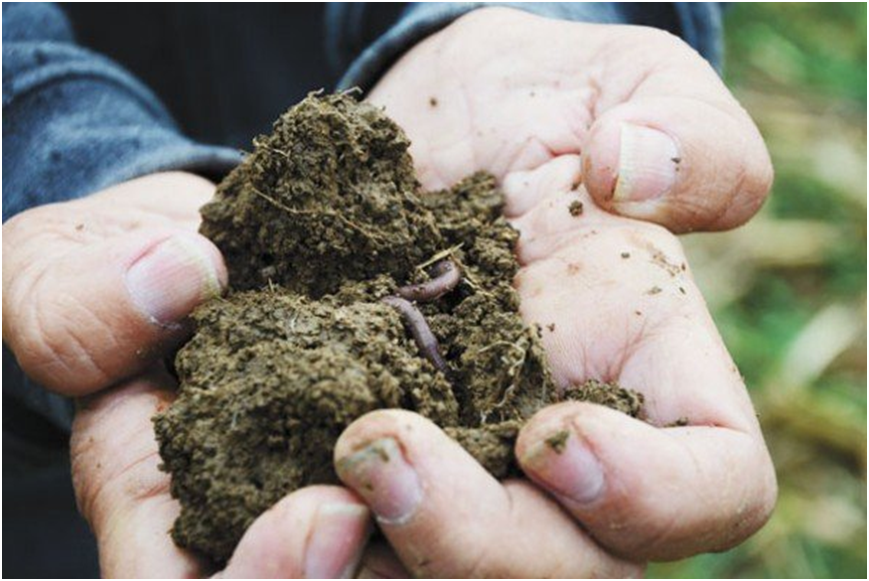
Exhibition time: 17-19 March, 2026 Shanghai, China
 中文
中文

Exhibition time: 17-19 March, 2026 Shanghai, China
 中文
中文

Soil organic matter (SOM) is carbon compounds from living organisms are decomposing or the dead bodies of microbes, small animals, and plants. A fertile soil has between 2% (sandy soil) to 8% (clay soil) SOM which contains essential minerals needed for plant growth. Humic (carbon) substances are vital to soil fertility and plant nutrition. Plants grown on soils with adequate humic substances have less stress, are healthier, produce higher yields; and have higher nutritional density and value.
Humic substances include humic acid, humins, and fulvic acid. Humus or humic acid is the long-term black dark SOM which makes up 65-75% of the total SOM; very dense and hard to decompose; and is the largest major source of soil minerals and soil fertility. Fulvic acid is the short-term active SOM that is water soluble with a high nutrient exchange capacity. Fulvic acid is used with foliar fertilizer because it can be absorbed by plant leaves, stems, and roots and can improve nutrient efficiency. Fulvic acid carries trace minerals directly within a plant to sites where the nutrient is needed and is non-toxic to the plant at low concentrations. Humins are in the middle, less dense than humus but denser than fulvic acid. Humins improve a soil’s water holding capacity, improves soil structure, and improves soil stability.
Humic substances directly and indirectly affect plant growth. Humic substances enhance plant uptake of nitrogen, phosphorus, and potassium. When adequate humic substances are available, the plant’s need for these three macronutrients decline, but when soil levels of humic substances decline, more fertilizer is needed to get the same yield. When nitrates start leaching into surface water or nitrogen is lost to the atmosphere, it’s because there is not enough carbon in the soil in the form of humic substances. Humic substances are the storehouse for plant nutrients in the soil.
Humic substances increases seed germination and seed development. Applications of humic acid or fulvic acid applied to seeds at planting increases seed respiration and cell division. The rate is generally 20-100 mg per liter or roughly .2 to 1 pound per 12 bags of corn seed. Be careful not to apply too much because high concentrations damage seed. Humic acid and fulvic acid also increase root growth 20-50%. Fulvic acid does a better job than humic acid because of its smaller size. Low concentrations (10-100 mg per liter) are required to make seeds and roots grow more robust. Humic substances are often added at a 3% rate to fertilizer to increase fertilizer and plant use efficiency.
Fulvic acid can be used with trace minerals or macro-nutrients in foliar applications and may increase fertilizer efficiency 100 to 500%. Less fertilizer is needed to see an immediate response within 24-48 hours. Young actively growing plant tissues respond quickly. Foliar applications can be applied timely to activate vegetative growth, flowering, fruit set, or fruit ripening. Side dress applications of commercial liquid humic acids and fulvic acids to soil with liquid fertilizer results in direct root uptake. These humic substances may change the electric charge and availability of minerals, making them more plant available and even easier to transport within the plant cells. Appling low concentrations of humic substances to plant leaves increases the chlorophyll content and increases plant photosynthesis, making plants healthier. Humic substances also increase plant growth hormones and high energy phosphate bonds (ATP), resulting in higher plant growth and yield.
Humic substances commonly occur within soils, compost, peat, and in carbon containing minerals such as brown coals, low grade lignites, and leonardites. The United States has several mines and mineral deposits suitable for obtaining good agricultural grade humic (carbon) fertilizer substances. The addition of mined humates (mined humic substances), especially where excess nutrient applications have occurred or where humic substances have been depleted, is a faster alternative than trying to restore humic substances naturally. The best source of humic substances for fertilizer use is from leonardites. The quality and efficacy of any humic substance can vary, so be prepared to conduct some side by side fields tests to analyze the effectiveness of different products.
Humic substances form naturally in soils where crop rotation, using balanced fertilizer programs, planting legumes and cover crops, applying compost and manure, and using minimum tillage practices all help build humus. Keeping soils healthy and protecting beneficial organisms builds soil humus. Humus building practices are slow and time consuming, however they pay large dividends over time.
By Jim Hoorman, Hoorman Soil Helath Services, Adapted from Dr. Robert Pettit, Texas A&M